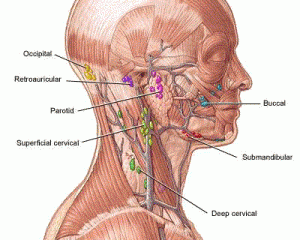Hodgkin’s disease
Adult men
The MOPP (mustine, vincristine, procarbazine and prednisolone) regimen was first developed in 1964. It has proved efficacy in that 80% of men treated remained disease free after 10 years. This increased survival in a number of young patients has led to the desire for preservation of fertility in these men and women. However two factors mitigate against this: the effect of the disease and the effect of chemotherapy treatment. 
Effect of Hodgkin’s disease on fertility. Hodgkin’s disease affects sperm function. In a recent 7 year study, two thirds of 92 men with Hodgkin’s disease had an abnormality of sperm count, motility or morphology before treatment, although gonadotrophin and testosterone levels were within the normal range. Another study looked at pretreatment sperm quality before cryopreservation in men with Hodgkin’s disease. Compared with non-Hodgkin’s controls, all sperm
parameters were depressed. Health care medications and products from Canada here: www.canadianhealthcaremalll.com
This included the sperm motility following thawing of the cryopreserved specimens. Of course this has considerable implications for the future fertility of young men with Hodgkin’s disease (Redman et al, 1987). In an assessment by Chapman et al, (1981), 43% of men with Hodgkin’s disease were described as subfertile on the basis of either impotence or ‘inadequate’ sperm counts prior to chemotherapy being initiated. Abnormalites of testicular histology were found in eight of nine pretreatment testicular biopsies. Effect of chemotherapy for Hodgkin’s disease on fertility. All viagra medications at
The second factor that mitigates against fertility in young men with Hodgkin’s disease relates to the severe gonadal toxicity of the combination chemotherapy regimens. Many recent studies have assessed gonadal response to treatment comparing regimens such as MOPP, MVPP, COPP and ABVD. A prospective Italian study showed that MOPP produced azoospermia in 97% of patients whereas ABYD had a lesser effect, inducing oligozoospermia in 54%. Following treatment, FSH levels were elevated in the MOPP group and spermatogenesis only recovered in 3 of 21 patients. FSH levels were normal in the ABVD group and sperm function recovered in all cases. A retrospective study of these two regimens confirmed these findings.
It is presumed that the alkylating agent in MOPP (mustine) and procarbazine, which has some alkylating activity, are responsible for the gonadal toxicity. Similar severe toxicity is associated with MVPP. Chapman et ai, reported that 100% of 14 men treated with MVPP developed azoospermia within 1 to 2 months of commencing therapy. This was associated with marked elevations in serum FSH levels. Possibly the use of alkylating agents in combination chemotherapy regimens may cause more longlasting testicular damage than their use as single-agent therapy. This is related to additive damage at different sites. Mustine kills mature germ cells as well as destroying germinal epithelium, and vinblastine arrests primitive germ cells.